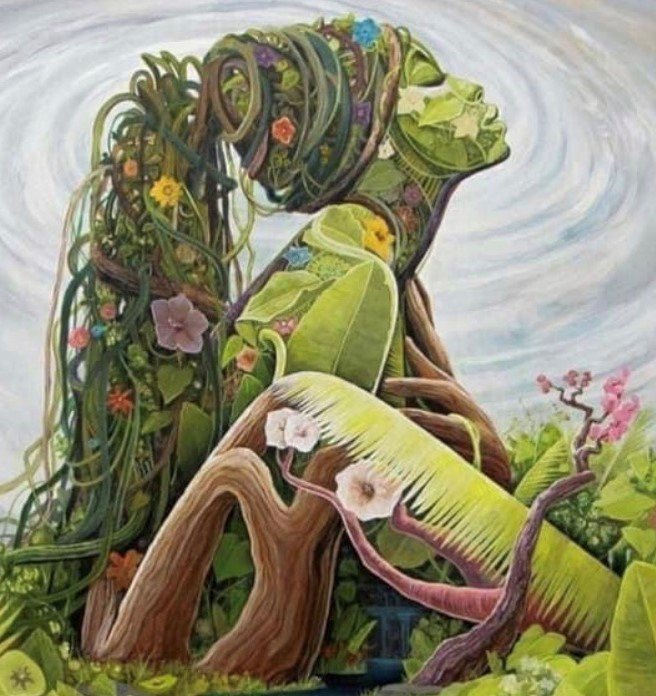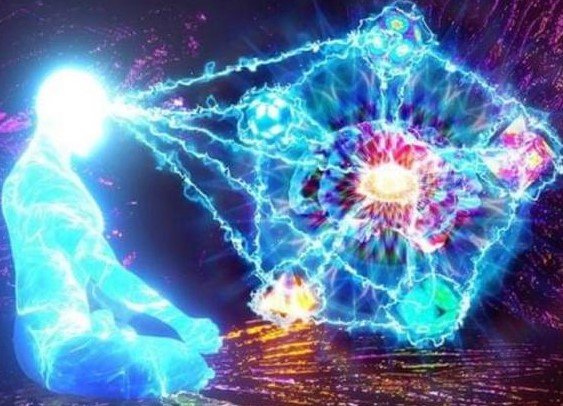Day-07 Introduction to ashtanga yoga-Mitraasha


Namaste All My Yoga Yaatris! May Yog Bless You!

Knowledge of Yoga is infinite, boundless and timeless. “Learning Yoga is an everlasting journey that leads you within and Within is where you find the world of immortal bliss”. –Mitraasha
The idea behind running this 51 Days Yoga Consciousness series is to proffer my modest learnings and share the divine pearls of Yoga science with people at large. Let’s have a conjoint intent to learn, implement and extend the wisdom of Yoga with a positive co-action and harmonious reverberation amongst each other.
Sage Patanjali has expounded a very intricate and meticulous set of techniques to practice yoga and reach the ekagra state. This method is termed as Ashtanga Yoga. It is regarded that the universal progress of mankind relies upon its capability to concentrate which means its transmogrification from being unsettled to an ekagra state of mind.
Ashtanga Yoga-Yoga of eight limbs or parts, wherein each of these limbs are corresponding to different facets of our psyche. They are
1.Yama–Restraints : Our outlook and approach towards things and other people may not always be correct and considerate and to address this aspect of one’s personality Patanjali formulated Yamas.
2. Niyama–Observances : Strengthening the positive side of life aids in being successful and happy, and to do so we may have to inculcate some healthy lifestyle and disciplined routine for which he ordained Niyamas.
3. Asana–Postures and 4. Pranayama-Regulation of Breath : For a good and healthy life, we need to have a healthy, fit and strong body full of vigour, vitality, energy and enthusiasm. For this he stipulated the practice of Asana and Pranayama.
5. Pratyahara–Withholding of Senses : Pratyahara was specified as the limb that helps in training our senses for right perception and also to keep the sense organs healthy.
6. Dharana–Fixity 7. Dhyana–Meditation 8. Samadhi–Perfect Concentration : Perfect Concentration is what everyone wants to attain as the ultimate goal of Yoga. And that balanced state of mind is achieved after mastering control over thoughts, feelings and emotions. And for that Patanjali has established the techniques of Dharana, Dhyana and Samadhi through the last three limbs.
The first five steps of ashtanga yoga namely Yama, Niyama, Asana, Pranayama and Pratyahara are known as Bahiranga Yoga because they cater to the exoterically perceivable contents of personality like our etiquette with others, our physical body, our breathing pattern and utilization of senses. Following these limbs aids in powering command over the mentioned aspects of our personality, which is a prerequisite to reach ultimate concentration.
The last three steps of ashtanga yoga namely Dharna, Dhyana and Samadhi are known as Antaranga yoga because they aid in ameliorating our mental reaches, like will power, perseverance, strong-mindedness and longevity etc. which are fortified by our capability to concentrate. Since it is an inner development that cannot be observed by others like our conduct and our physical bodies, these three steps are termed Antaranga or Internal Yoga.
Yama, the first limb focuses on one’s moral, social, behavioural conduct and standards of integrity, uprightness, virtues and how one orchestrates towards oneself and others in life. Yama’s are universally practiced in one form or another and can best be remembered by a slogan, “Do unto others as you would have them do unto you.”
The five Yama’s are:
Ahimsa –It means non-violence. Non violence not only in physical terms, but also to avoid the violence of words or thoughts as unharmonious words and jarring speech may impact others adversely and cause violence. This leads to the loss of the mind’s peaceful and balanced state making one incapable of continuing in the path of yoga. Other four niyamas revere Ahimsa and they must be implemented on the basis of Ahimsa.
Satya – Literally it translates to speaking the truth always. It also means stating things as you see without being judgemental, biased, prejudiced, adding personal interpretations and own meanings. It demands harmonious balance between thoughts, words and actions. But also being truthful does not imply or allow us to be vicious or offensive to others. Utmost diligence should be practised when speaking while maintaining Ahimsa always as the base line.
Asteya – It teaches us to move above the general habit of collecting, stashing away and/or stealing, be it material things from others and/or credits of work done by others. It asks us not to take anything more than is rightly and legitimately allowed.
Brahmacharya – It directs one to move in the path of spirituality by foregoing seeking sensual pleasures.It does not instruct one not to marry, as the utmost eminent thing here is the conviction to walk on this path and stay true to one’s commitment towards the same. The literal meaning of Brahmacharya would be the routine of actions/choices that aids Sadhaka (practitioner) in achieving Brahma. It suggests a lifestyle unerringly disciplined for spiritual furtherance and ultimate self-realization.
Aparigraha – It has largely been seen that we gather unnecessary things more often than not just to compete with the people around us, even without actually needing them. The greed to possess more and more goes way beyond control and that not only burdens the life of one acquiring things but also robs the opportunity from those who actually need them. Aparigraha teaches us to learn to be content with what we have and be willing to give away things which are not necessarily required. It also asks us to keep a check over our needs and act on the basis of understanding the difference between needs and desires.
Niyama, the second limb, deals with self-discipline and spiritual observances. These are Do’s or rules for a person who wants to live happy and healthy and lead onto the path of spirituality.
There are five Niyamas as follows.
Saucha –indicates cleanliness or purity and It is strongly believed that cleanliness is akin to Godliness. It is highly recommended for aspirant yoga practitioners to maintain a proper hygiene level, not just at the external body level but also internal. One should not limit this to just one’s own body but also maintain the cleanliness of the place where one lives. One’s mind should also be kept clean by getting rid of anger, ignorance,lust, greed and other malign feelings.
Santosha –means contentment. One should be happy with what one has in life.This happens when one eliminates the wish to acquire anything more than what is necessary for survival and which may breed sorrow or desolation. Due to his satiated attitude towards life, he neither gets into mental conflicts with people around him, nor depends on them or acts broody or wise. He gains control over his senses and due to his contented and balanced state of mind, he spreads joy and pleasantness amongst others around him.
Tapa – The literal meaning of the word ‘Tapa’ is to heat, like the way we heat gold to find its purest form. According to Maharishi Patanjali, the meaning of Tapa is to perpetuate intrepidity in the pairs of opposites, to go through and accept the opposites (for example: pleasure and pain) with the same equilibrium and calm. Regular and determined practice of Tapa intensifies the will, aiding the individual to achieve mastery over his body and senses.Practising Tapa helps to get rid of the mental impurities and renders strength and purification of the mind.
Swadhyaya –The word Swadhyaya is a synthesis of two words. The word ‘swa’ means one’s own and ‘adhyaya’ means to study, learn or introspect. So, Swadhyaya can be understood as ‘study of the self’ or ‘study of the scriptures’. Extensive pondering, contemplation and meditation are the tools for self study. These techniques inculcate both an hearable narration of scriptural hymns as well as quiet mental recitation “japa” of specific mantras. Although it is the most challenging task to understand one’s own self, it is highly recommended to study one’s own self day and night, in thought, speech and action.
Ishwarapranidhana –is renouncing and offering all the work, acts and deeds of mind, body and soul to the Ishwara(God) without expecting any results and surrendering completely to his will. Ishwarapranidhana is steadfastness par supremacy and utmost detachment. It aids in redirecting one’s attention away from selfish aspirations, personal dramas towards the higher universal energy, and curb the pain causing afflictions of the mind. It elevates the practitioner on his spiritual path.
Asana is a state of being, in which one can stay physically and mentally steady, calm, quiet and comfortable. In the Yoga sutras of Maharishi Patanjali, there is a definition of Yogasana in Chapter 2, Sutra 46 as “Sthira Sukham Asanam ”– which means that a posture is that which makes one steady and comfortable. In this context, Asanas are practiced to inculcate the abilities to remain in a comfortable posture for a longer period of time. Asana practice inculcates discipline, healthy routine and enhances the ability to concentrate, both of which are prerequisite for meditation. Asanas differ from within at times with regards to taking the position (slow & controlled movements), maintaining the position (steadiness, comfort & relaxation) and releasing the position.
Pranayama is the process of gaining mastery over movements of one’s breath. ‘Prana’ is Breath or vital energy in the body. On subtle levels, Prana depicts the Pranic energy important for life or life force, and ‘ayama’ means control. Hence, Pranayama is ‘controlling Prana through control of Breath. Patanjali mentioned pranayama as a way of reaching higher states of awareness. He mentions the holding of breath as an eminent technique that aids in attaining the state of Samadhi.
Pratyahara means the withdrawal of the senses. This explains that the senses uphold within themselves instead of moving towards an object. If the mind is involved in some deeper thoughts, one does not feel or observe the usual sensory distractions like noise, heat etc. There are eleven senses, five internal–of knowledge (Jnyanendriyas) and five external–of action (Karmendriyas) and manas (mind) as the boss of all the senses. He who gains mastery over Pratyahara overcomes Vikshepa or distraction of mind with less further efforts.
Dharana or concentration is the capability to fix the mind on one object; however the mind is still not in much control at this level and the concentration gets interspersed by other thoughts; even though it may be occasional. Thus concentration remains for a shorter duration as compared to Dhyana.
Dhyana (Meditation or contemplation, is the steady, sustained flow of concentration. Dhyana is better explained by comparing it with the flow of oil from a pot, the steadiness, evenness with which oil flows down from a pot is the equilibrium of concentration without any interruption, for a much longer extent as compared to Dharana.
Samadhi means “to bring together, to merge.” Samadhi is the deep absorption, wherein only the quintessence of that object shines forth in the mind, as if the mind was empty even of its own form. In Samadhi finally, the mind discerns itself with the object of meditation. There is neither Dhyana (meditation) nor Dhyata (meditator); the worshipper and the worshipped become one or identical.
It is said that to progress on the path of Yoga, all the steps are needed. Even though distinct steps are established, they all need to be practiced concurrently and not individually one after another if one wants to succeed on his path of Yoga.
The objective of these steps is to eventually establish discipline in behaviour by purifying the Body and Mind, an essential requisite to achieve yoga.
Thought of the day : Yoga is the practice of quieting the mind- Patanjali
Link to day 06 Introduction To Hatha Yoga https://kreately.in/51-days-yoga-consciousness-series-2nd-may-21st-june-2021-mitraasha-day-06/
Link to day 08 Proning Helps Covid-19 Patients Breathe Better https://kreately.in/51-days-yoga-consciousness-series-2nd-may-21st-june-2021-mitraasha-day-08-proning-helps-covid-19-patients-breathe-better/
DISCLAIMER: The author is solely responsible for the views expressed in this article. The author carries the responsibility for citing and/or licensing of images utilized within the text.
